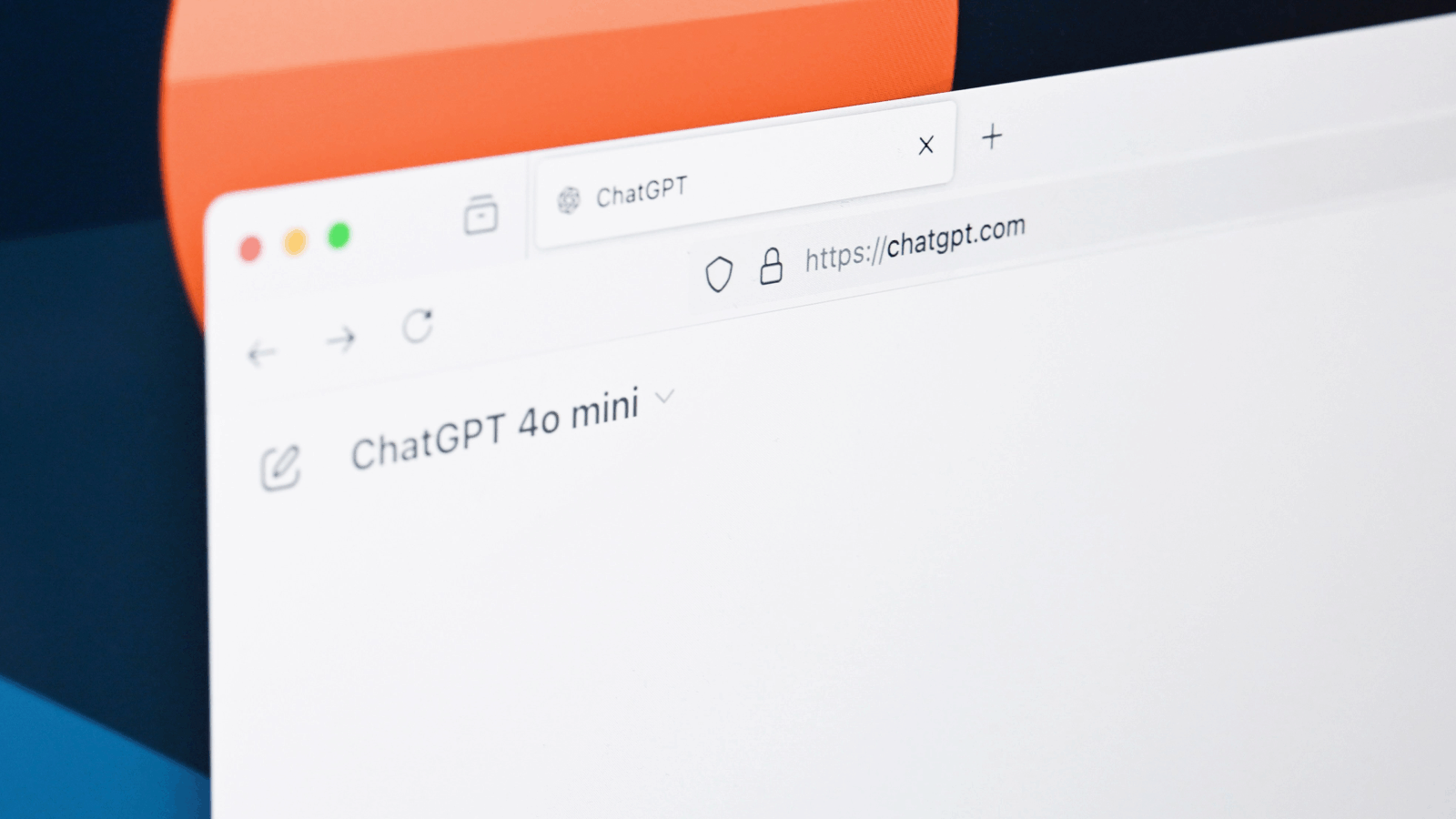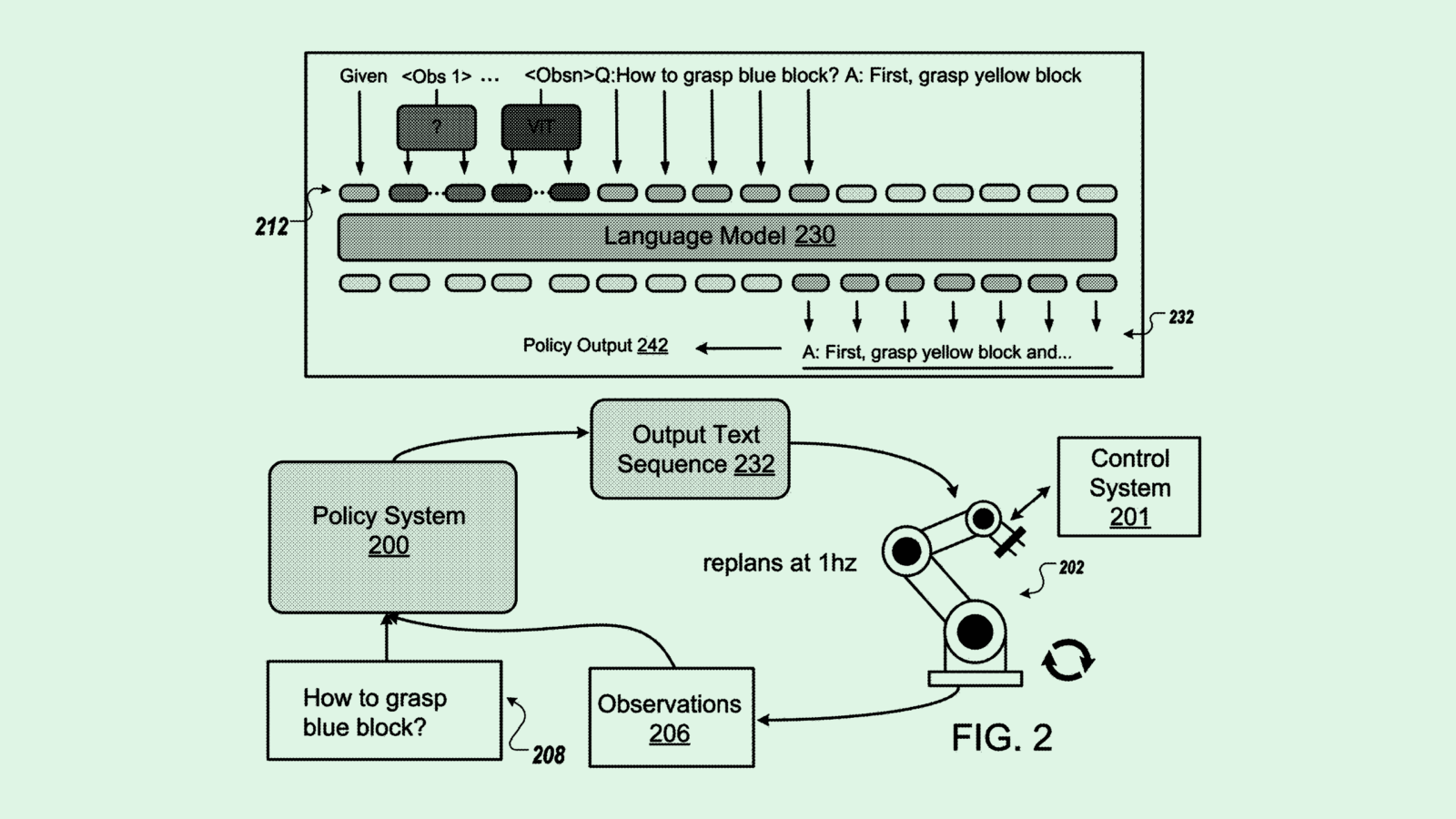Happy Thursday and welcome to CIO Upside.
Today: We dive into how OpenAI gained its monumental lead among enterprise users. Plus: How automation is transforming desk jobs; and Google’s recent patent could make it easier for humans and robots to collaborate.
Let’s jump in.
How OpenAI Became a C-Suite Darling

When ChatGPT burst into the public eye in November 2022, it set off a wave of AI excitement that’s still being reckoned with today – and gave OpenAI a significant head start in becoming a household brand.
It’s the preferred choice of companies, too. In a study of more than 30,000 US businesses from fintech firm Ramp, 32.4% reported a paid subscription to OpenAI’s services as of April, vastly outstripping its competitors. Anthropic took second place at 8%, followed by xAI at 0.5% and Google and DeepSeek tied at 0.1%.
OpenAI’s success mirrors that of AWS in the cloud space: Though being first in line gave it an advantage and significant brand awareness among enterprise users, it didn’t stop there, said Thomas Randall, advisory director at Info-Tech Research Group:
- A big factor in its success has been ease of use. OpenAI created a “smooth pathway for enterprises” to seamlessly adopt its technology for a broad range of use cases, Randall said.
- The company also reeled in developers early with extensive API documentation and software development kits, he said, which allowed businesses to “speed run their own AI-powered functionality.”
- OpenAI has also given its ecosystem “stickiness,” Randall noted, through integrations and partnerships with commonly used business platforms like Salesforce, Microsoft and Slack.
The speed of its development also has given it an edge, Randall said. “In basically two and a half years … what it could do then versus what it can do now is just worlds apart in terms of quality. They haven’t stood still.”
And while different models have their own talents, they’re all chasing similar benchmarks and eyeing the same market. Because of this, “overall, OpenAI and Anthropic cover the vast majority of use cases,” Randall said.
One thing that Ramp’s index leaves out, however, is those who prefer building to buying. While it’s much easier for an enterprise to acquire first by utilizing tools that are on the market, some may prefer to build in-house or take advantage of open-source offerings, such as Meta’s Llama family of models, Randall said.
The build route is best for companies looking for a niche model that has no use cases on the market, Randall said. It’s also better if your organization needs to retain total control over what goes in and comes out of a model, or if the model is operating at the core of a business, he noted.
“If organizations have got very strict data sovereignty or customization, or they have an entire team whose culture is build before buy … under an open license, they will get far more out of building out privacy infrastructure,” he said.
But building can be costly and time-consuming, putting it out of reach for the majority of enterprises, Randall noted. And while data privacy risks certainly exist, proper governance can keep them under control.
“If an organization is very clear about governing these models, there’s no model which will be inherently riskier than another,” Randall said. “The question they should ask is, ‘Does this model fit what we’re looking for or not?’”
AI Expert: “Doctors Will Be 10 Times Better Than Before”

That’s what Yigit Ihlamur, an AI expert, said in a recent interview — and we’re already seeing it unfold.
Heart disease is the #1 cause of death worldwide — and a $500B healthcare burden in the US alone—yet the leading frontline defense against it is the ECG, a tool that hasn’t meaningfully changed in over a century. That’s why HeartSciences built the first-ever AI-powered ECG device.
Developed alongside names like the Icahn School of Medicine at Mount Sinai, the AI-enhanced tool helps detect heart disease before symptoms appear, with the potential to save lives on a global scale.
Now, with FDA submission just months away, HeartSciences is preparing for commercial launch and inviting you to become part of its future.
Learn more about investing in HeartSciences before this potential inflection point hits.*
The Risky Business of Replacing Human Workers With AI

AI-powered automation is coming for enterprises. What does that mean for entry-level workers?
A recent report from SHRM found that 19.2 million U.S. jobs, or 12.6% of current employees, face a high or very high risk of displacement due to automation. The occupations most likely to be affected are blue collar, service and white collar administrative jobs.
Some of the occupational groups facing displacement by automation include business and financial operations roles at 19.9%, office administration roles at 15.8%, sales roles at 13.1% and computer science and mathematical roles at 9.7%.
AI automation has the power to save enterprises a ton of money, time and resources by more efficiently replacing manual, tedious and repetitive processes that would otherwise be handled by humans, said Mark Runyon, IT consultant and fractional CTO at Honest Jobs. However, it also forces organizations to ask themselves a tricky question: What happens to the workers they’re replacing?
“It is amazing what we can do through those manual tasks that can be automated,” said Runyon. “So the next question is, ‘Are you letting these people go? Or are you elevating them to higher level positions?’”
Managing the transition properly doesn’t necessarily mean slashing workforces. Offering upskilling or reskilling in areas where it’s appropriate is probably the first step, said Runyon:
- The transition could be smooth in some cases, said Runyon, such as when an organization has open roles that affected employees might want to explore. But for others, “especially people that are later in their careers” and resistant to change, “that can be a bigger struggle.”
- And even for those that are willing to learn, upskilling isn’t always easy, said Runyon. Just dropping workers into an online course isn’t enough. “It takes a very carefully executed plan to make upskilling work.”
Ultimately, there’s only a certain amount of work available within enterprises once automation takes hold, said Runyon. “Companies are getting leaner through leaning on these technologies. And it’s only going to accelerate,” said Runyon. “It’s only getting more rapid. So what is our obligation to our people?”
Still, AI automation is far from infallible. There are a number of ethical considerations and risks to be considered before replacing human workers with the technology, Runyon said. The first consideration in managing the change is identifying where automation would be most effective, whom it would most affect and whether the transition might create new opportunities for current employees. There are also the risks inherent in AI, such as data security, hallucination and bias.
But at the speed with which automation is gripping enterprises, those questions often go unanswered and unconsidered, Runyon said.
“Everything is moving so fast that these steps can get skipped,” Runyon said. “There is a lot of inherent risk that, if we aren’t slowing down, it’s going to bite us.”
Google Patent Makes Controlling Robots Easier

Are you ready for robotic coworkers?
Google may be able to make collaborating with them a little simpler: The company is seeking to patent a system for “controlling robots using multi-modal language models” that essentially allows the machines to operate based on both language commands and environmental surroundings.
To do this, Google’s system gathers environmental data collected via sensors, such as cameras or motion detectors, and textual data that dictates commands, into an “embedding space.” There, the data is turned into representations that an AI model can actually use which are then fed to a neural network that outputs commands for the robot to follow.
On the user end, the tech makes it easier for humans to control and interact with AI-powered robots. Google noted its system “allows a robot to be controlled by a user using natural language input, without being limited to particular predefined command words or phrases in the input.”
This isn’t the first time Google has taken an interest in robotics. The company previously sought to patent a system for simulating robotic training data to train real-world systems. And in March, the company introduced AI models specifically tailored to robotics.
Google isn’t the only company keeping pace with the AI robotics industry, though. Intel, Nvidia, Amazon and more have all sought to lock down IP in the rapidly expanding space. Additionally, Amazon last week announced a new robot called Vulcan, which it claims has a sense of touch. And as humanoid robots enter the chat, competitors such as Figure AI and Tesla’s Optimus robots are garnering more attention.
One of the biggest obstacles standing in the way of human-robot harmony is safety, however. The closer humans work with autonomous machines, the more dangers arise. Starting with automation of tedious tasks – and giving these machines more data and environmental context as this patent intends to – could reduce the risk of error.
Extra Upside
- Coding Cuts: Microsoft’s job cuts hit its product team hardest, with software engineers making up the largest single job category of impacted workers, Bloomberg reported.
- Cisco Comeback: Cisco reported a solid revenue forecast for the current quarter, largely boosted by AI demand.
- Back AI Tackling The #1 Cause Of Death. Analysts gave this public stock a Strong Buy rating. Now, investors have a unique opportunity to get warrants + convertible preferred stock in HeartSciences.**
** Partner
CIO Upside is a publication of The Daily Upside. For any questions or comments, feel free to contact us at team@cio.thedailyupside.com.
Disclaimer
*This is a paid advertisement for HeartSciences Regulation A+ offering. Please read the offering circular at https://invest.heartsciences.com/.

